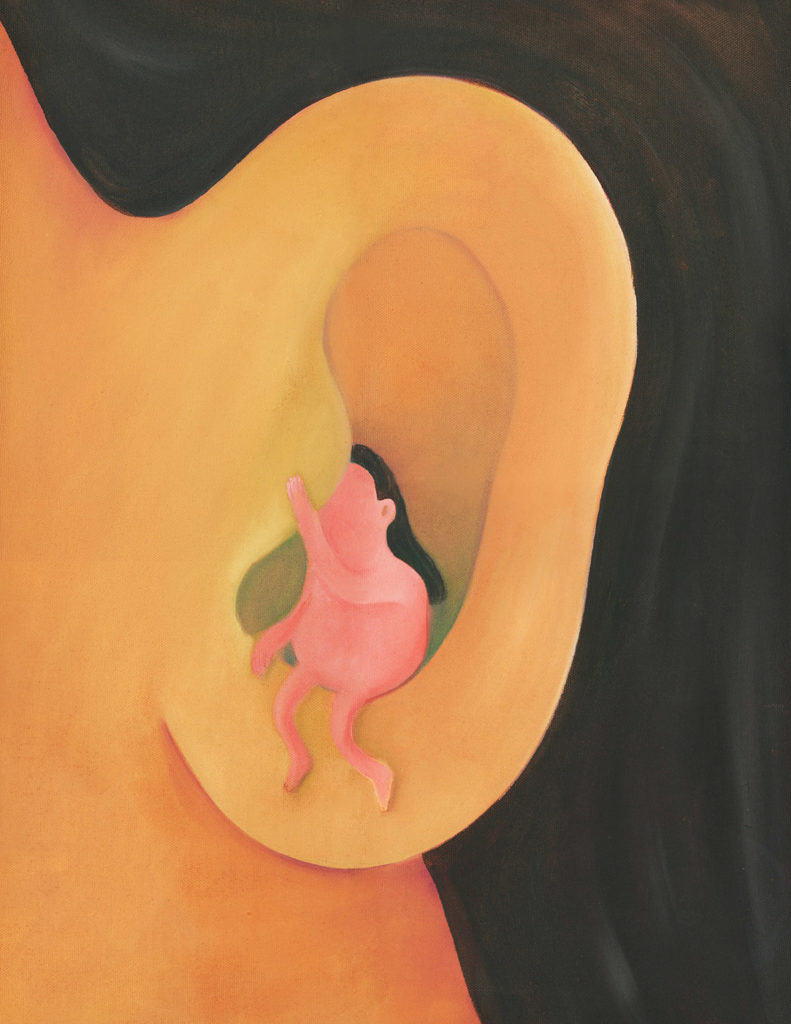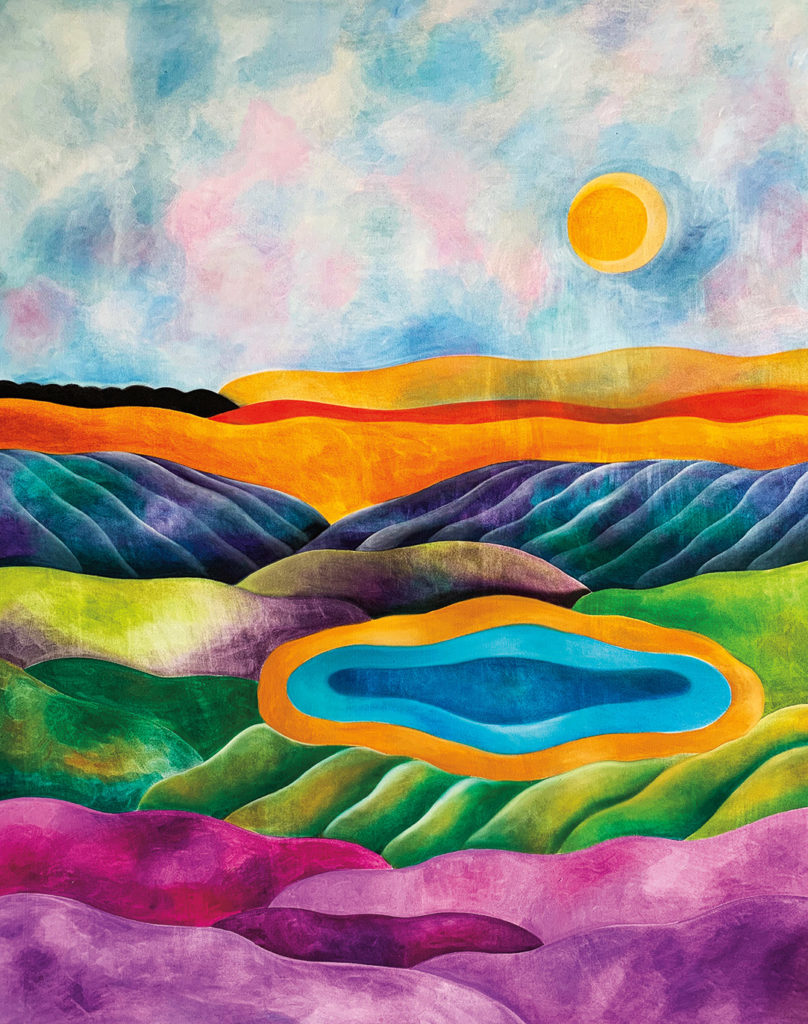Finding kernels of joy has become a matter of survival this year. It’s also something Camilla Engstrom knows a thing or two about. The 31-year-old artist paints psychedelic pastoral scenes, dances around her Los Angeles studio in colourful getups for her Instagram followers, and frequently expresses herself through a playful pink alter ego named Husa. “This year has made it clear that my purpose is to lift people up as best I can,” she says. One glance at her serotonin-boosting feed is confirmation that she’s achieved this goal.
Long before the pandemic, though, Engstrom was doing the work. “I’ve always been the person trying to lift my friends up, which is great, but I think that with social media, I’ve been thinking a lot about how I can reach out to more people,” she says. She discovered therapy in her mid-20s
after a long stretch of darkness—a difficult childhood in Sweden, toxic relationships, and disillusionment with a path she’d originally chosen in the fashion industry in New York— and over the years, has come back to a sunny disposition she believes is innate. “I knew deep down that I was still a very positive person; I just didn’t know where she had gone, you know?” She began journaling her life goals and dreaming about bright futures she scarcely would have let herself dip into in the past. “I like to think, ‘How can I write down a goal that almost makes me nauseous because it’s so big and exciting to me?’” she says.

Ear buddy, 2019. Oil on canvas. 20 × 16 inches.
She discovered painting, too—specifically Husa (Swedish for “housemaid”), a voluptuous rejection of the thin, “grumpy” figures Engstrom had been taught to draw in fashion school before she dropped out. Husa was
the antithesis of the ingrained beauty ideals Engstrom railed against: she was wild, happy and free, frolicking across imaginary landscapes in the nude. “She is a way for me to express my pent-up resentments through a cartoon,” says Engstrom. Today, Husa is on pause, with the artist taking her place as resident champion of positivity.

Spirit Garden, 2020. Oil on canvas. 72 × 60 in / 182.9 × 152.4 cm.
Lately, those imaginary landscapes have begun to take centre stage in Engstrom’s work as a tribute to nature’s healing powers. “I meditate a lot, and I paint what I see when I close my eyes,” she says. She reenvisions verdant hills as violet, blue skies as magenta and lakes as yonic shapes that float somewhere within the lines. Husa has become a stand-in for Mother Nature, nurturing lush hills, creamy waterfalls, and bouquets of flowers with her breast milk.
These dreamlike approximations call to mind Georgia O’Keefe, who painted many of her naturalist odes during similarly turbulent times (the painter convalesced from the Spanish Flu at the home of her future husband, photographer Alfred Stieglitz). And just like the stabilizing nature of O’Keefe’s works, Engstrom says, “My dream is for other people to get into the state that I feel during my meditations when they look at my paintings. I really want people to feel peace, and for me that’s in nature.”
Living in California has given Engstrom easy access to the outdoors, but also a greater understanding of the ravages of climate change. “I’m trying to find ways to become a better visitor on this planet,” she says of her farmer’s market visits and switch to a vegetarian diet. “When we appreciate nature,” she says, “we take better care of it.”

